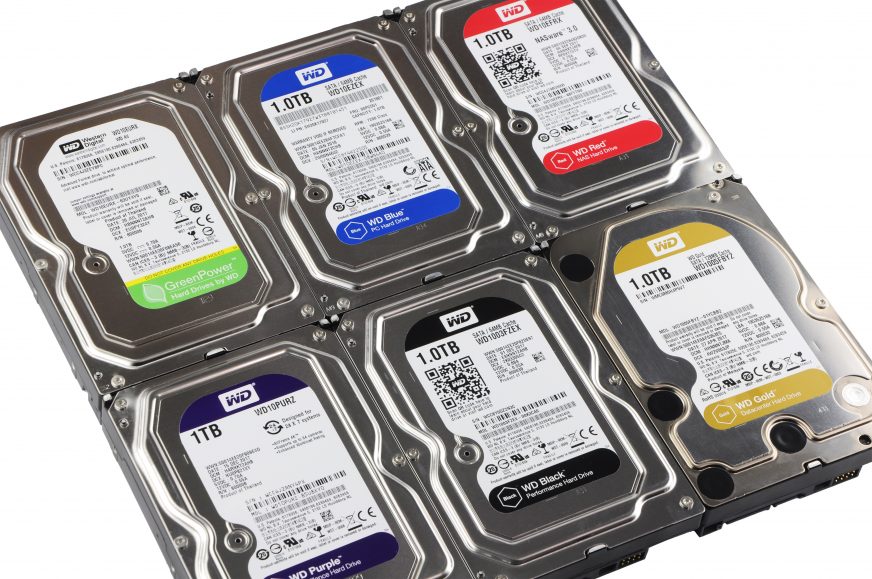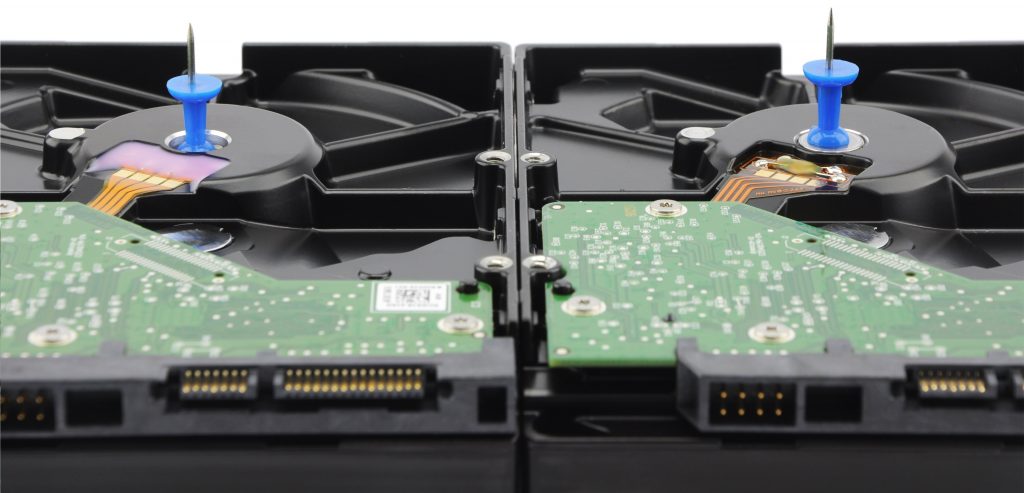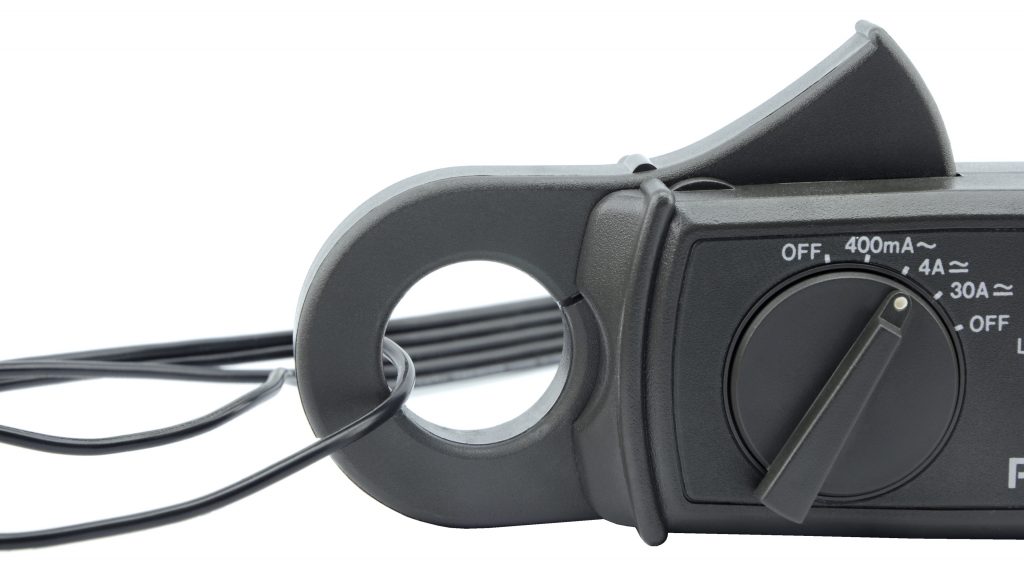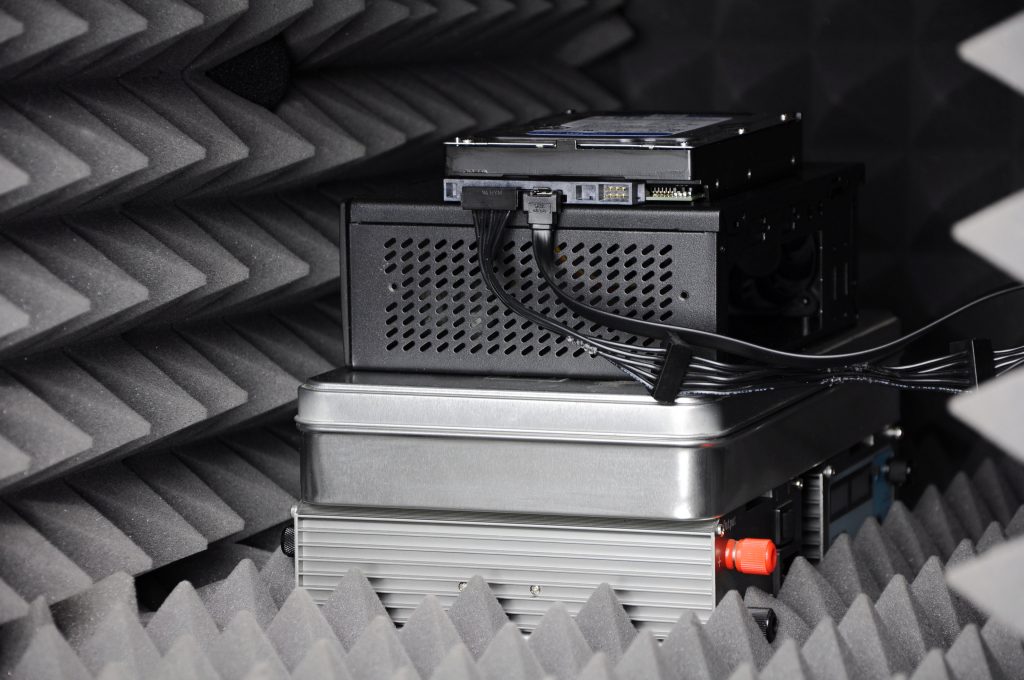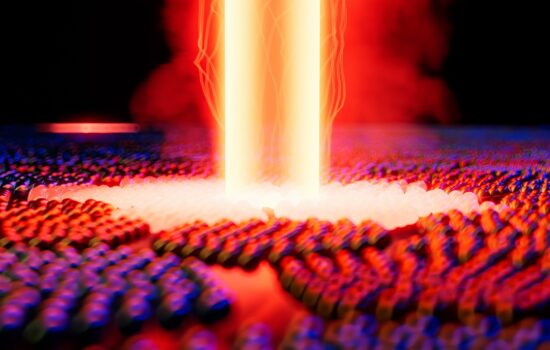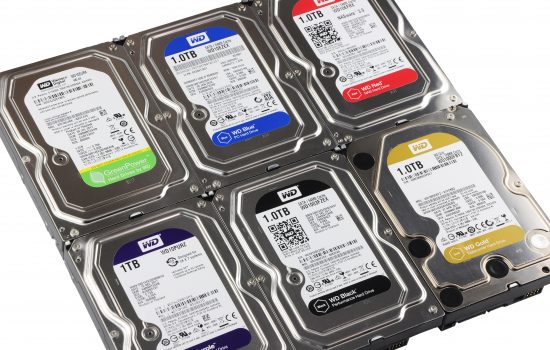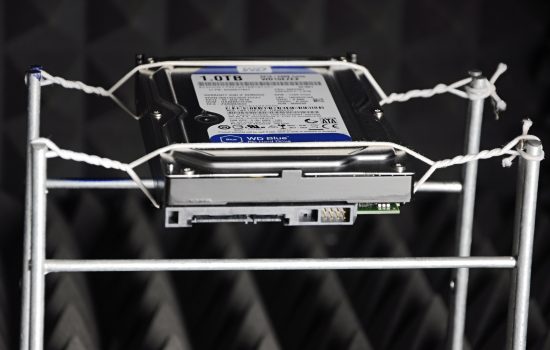What and how we were testing
What disk is best for an office work, photos, videos, operating systems, games, and for demanding servers? And is the Red really well designed for network storage? You can find out in this practical comparison of the performance, consumption, and noise levels of each model from WD. The differences are significant and the results surprising. Green, blue, red, purple, black, or gold?
Western Digital apparently has a clear idea about every series: Green as a storage of data that don’t require long access time, Blue as a compromise between performance and price for casual home configurations, and Black as its (Blue) more powerful alternative for more demanding users. The remaining three disks promise a design for continual operation. Purple for CCTV systems, Red for NAS, and Gold could be useful even in data centers because of its high performance. We couldn‘t test their real lifespan, obviously, but we did everything else that matters.
Each of the tested drives is a current model in its series, with a capacity of 1 TB, and one platter. All disks have 64MB cache, except for Gold (128 MB). Green, Red, and Purple run at 5400 rpm. Blue, Black, and Gold run at 7200 rpm. What’s interesting is that the Gold weights roughly 40% more than others (618 g). Probably because of its robust spindle and bigger PCB, see the picture below:
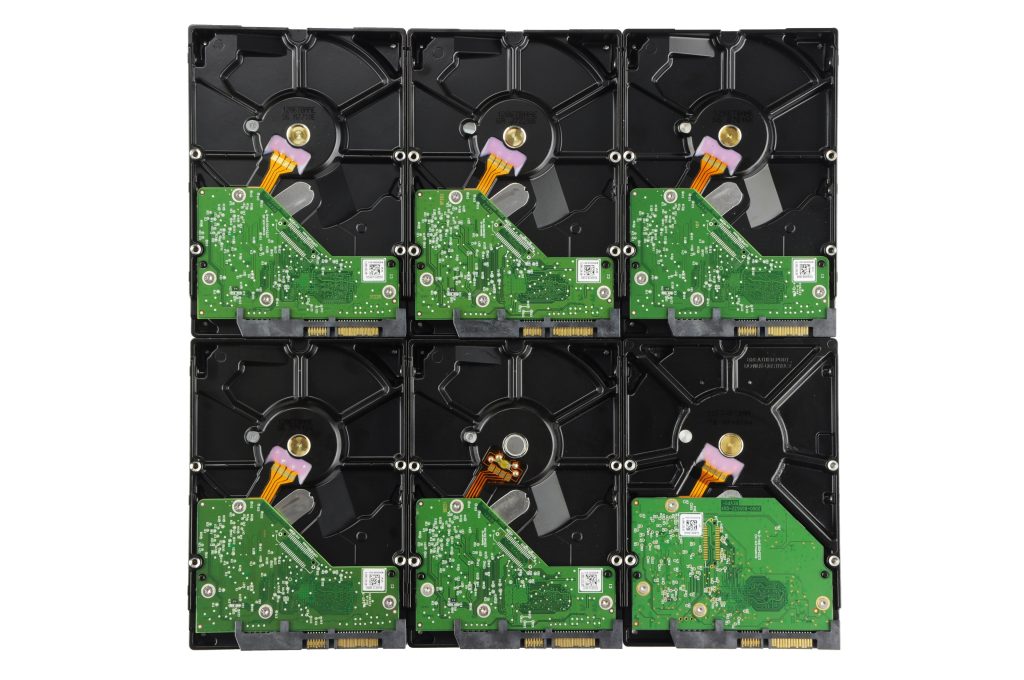
Slower 5400rpm models don’t look that different on the outside, but you cannot overlook the difference between Blue and Black. Black has an atypical rotor design. Its actuator axis (which is made of a different material) is on the same height level as the casing (the axis in others is a bit lower). And Black also has a unique flat connector.
How we were testing
The performance was tested by transferring directories with different file sizes. From RAM to HDD (write) and vice versa (read). The smallest files had 12 – 59 kB, representing document data which are the biggest challenge for drives. It was much better with bigger blocks (427 – 1235 kB), the performance almost reached its maximum. In practice, we talk about compression of photos or videos. The next phase was concentrated on 5 – 10MB files (JPEG, MP3, and other mainstream formats). Uncompressed RAW and FLAC files belong to the fourth category of 24 – 36MB files. And finally, we used large files, 1 – 2 GB. These are usually high resolution videos, various archives, or exported projects from graphics editors.
We recorded the speed with stopwatch, and then converted it to MB per second. During writing and reading, we also recorded the flowing current on 12V (mechanical) and 5V (logical) SATA conductors. This was done using the amperometric pliers Prove 15. We measured the consumption even in idle, after 30 minutes of inactivity. After this time, all tested models stabilized to the minimum of their capabilities (with platters still moving). Disks can have lower consumption than this only during spin-down.
The noise level was measured in an isolated space. We subtracted the noise in idle first, when the only sound was the one of the rotating platter. Then, through HD Tune, we simulated random access to 512B blocks. That’s when the heads go wild and the noise rises accordingly. One of the reasons is that we put the disks on metal cases which spread the vibrations, and that creates a secondary noise. It’s a similar situation like in some PC case. Commercially promoted anti-vibration mounting systems can usually only partially absorb the negative effect.
To achieve the most accurate results, the disks were placed 10 cm from the noise level meter Reed R8080. We put average values of all relevant samples to the charts (noise, power, consumption).
We also did some tests of heating of every model (without an airflow) after 30 minutes of operation with max. performance. However, this is only symbolic because these temperatures are not that important. More interesting circumstances would be in a rack full of disks in some server room where the ambient temperature is way higher than in our testlab (21 – 21.4 °C).
The test platform was Intel X99 (Marwell) because we measured the best results of all external controllers with it (during our preparations of the procedures). The memory modules we used were G.Skill Flare X 32 GB (3200 MHz/CL14).
- Contents
- What and how we were testing
- Write
- Read
- Random access
- Input power + heating
- Consumption
- Noise
- Conclusion





